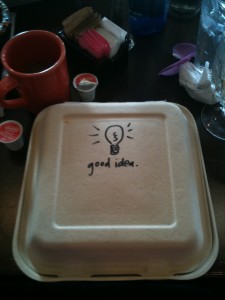 10 Reasons Why Major Gifts Fundraising is Like Hosting a Dinner Party
10 Reasons Why Major Gifts Fundraising is Like Hosting a Dinner Party
Do you have a major donor program yet? I know how much spare time you have before December 31: none. But not only is it not too late to plan a few thoughtful phone calls and visits with the people who love your organization the most, it’s essential you do. Why?
During the holidays, we reach out to friends and family and celebrate our connections, often over a meal. Over the years, wouldn’t the people closest to you begin to wonder why you’d never invited them to a holiday dinner to get to know each other better, face-to-face?
Not asking your closest supporters to engage at a higher level during the season of giving is similar. They’ll wonder why they’re not being asked. Eventually, they’ll go elsewhere for nourishment.
So pretend you’re throwing a dinner party and the same rules apply to your major gift outreach:
Your first major donor effort doesn’t need to be a banquet. It’s easy to convince yourself your organization doesn’t have the capacity. Who has time for fancy moves management and extensive donor research? Forget about all that and just do what you can. If your home will only accommodate a few guests right now, then start small. We often have the most intimate and satisfying dinner parties – or successful major gifts efforts – with a few select guests.
Thoughtfully compile your guest list. You want invitees to respond favorably, i.e, make a major gift. So only invite the people most likely to join you. Do you have a strong connection to them – are they a volunteer, long-time donor, Board member or Board member’s best friend? Or, are they interested in the kind of delicious food you’re serving – your programs? Make sure your guest like has either 1) a connection or 2) an interest, plus the ability to make a gift of significance.
Consider having a co-host. You know if life-of-the-party Uncle Jack comes, then your other invitees are more likely to sit down at the table. Ask whomever your organization’s “Uncle Jack” is to help plan your party and encourage other guests to attend.
Craft your invitation carefully. You must give invitees the information they need to make an informed decision about your invitation. You wouldn’t invite someone to dinner and after they’ve eaten, boldly ask them to pay for the meal AND next year’s party. Have the same respect for your prospective donors, and tell them you’d like to meet with them to talk about a gift.
If you send an email or a letter, DO call them to follow up. If your prospective guest knows how important it is to you, the host, that they’re valued and wanted, they’re more likely to join you.
Put your house in order. Doing major gifts does mean being prepared to answer honest questions about why you’re asking, who else is a supporter, and how you’ll use their investment. But when planning for a dinner party don’t renovate your dining room – just ensure it’s organized, doesn’t smell bad and is warm, comfortable, and inviting. Make sure the materials you bring and your answers are the same.
Prepare something delicious and serve it beautifully. The actual meal represents 1) the ways the work you’re doing benefits the community 2) an ask for a major gift and 3) a discussion of how their gift will advance the mission. Whatever you’re cooking, make it appealing, easy to swallow, and tailored to their individual tastes as much as possible. It can be appropriate to offer them range of portion – or gift – sizes, or ask them if they’d prefer one dish – or funding opportunity – to another.
Make sure you know who your server is and that they’re trained at their job before they dish up an ask for a major gift. The ask is just one moment in an entire evening. But if it doesn’t get served right, everyone walks away hungry.
Sit back and enjoy the conversation. Be mindful you don’t monopolize the discussion. As the host, it’s important to listen to your guests, acknowledge their questions, and invite their input.
And remember: you’re offering to satisfy their appetite for having their philanthropy make an impact in a satisfying way. Sharing stories of success and your passion will feed their excitement and invite them to be insiders. Be honest about your specific need, but don’t make “need” a focus – your general need for support is not unique: your relationship with this donor is, so focus your conversation around that.
Send guests home with your appreciation and a gift. If all goes well, your in-person get together with a prospective major donor will result in a promise for a gift from them. Whether or not it does, make sure they know you appreciated their time and their company. Give them a gift: more information about what you just discussed, and possibly a small token that’s valuable to them – something your organization or constituents make might be appropriate.
Keep the connection through the New Year. Once you’ve deepened your organization’s relationship with someone, stay in touch with them. Major donors want to hear how things are going. Even if the investment of time didn’t result in a gift right away, your effort won’t be unnoticed. You’ve likely made a new ally for your organization and you’ve opened your door to future possibilities to sit down at the table together and talk.
Post originally published on Wild Woman Fundraising





